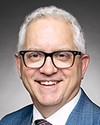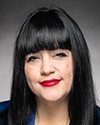Thanks, Michael, for the introduction.
I'm pleased to be here before the committee.
Connected North was created through a collaboration between Cisco Canada and Her Excellency Mary Simon, focusing her work on the 2011 national strategy on Inuit education. The program was launched as an innovative way to harness technology to engage students and provide 21st century digital access to resources to help close the education gap.
After a successful pilot project in one school in Iqaluit in the 2013-2014 academic year, the program expanded across Canada, which is really exciting. TakingITGlobal took over operations of the program in late 2015 and has led its rapid growth since then. Cisco and an ecosystem of private sector technology partners remain engaged today to provide and support best-in-class technology solutions.
At the heart of the program is the commitment to an approach that holds indigenous perspectives at the centre of both content and process. This is what makes the program unique. This includes developing culturally relevant content that respects and values students' cultures, supporting the work of the Truth and Reconciliation Commission. Sessions are sourced and developed in partnership with teachers in communities in direct response to their needs, and first nations, Inuit and Métis role models are involved wherever possible as critical sources of knowledge and inspiration.
There are currently over 2,250 sessions available to be booked, which is incredible. Each session has been developed by one of the more than 300 active lesson providers, 132 of whom are indigenous, and the program offers stipends to all providers, bringing new economic development opportunities to many indigenous artists, elders, scientists and a whole host of folks.
The interactive sessions, held in real time, average about 45 minutes in length and cover any topic or subject matter. The most popular subjects are science and environmental studies, arts and music. Examples include virtual field trips to museums, science centres, galleries, aquariums and more; teacher professional development workshops and training; and sessions that explore future pathways for education and careers, featuring indigenous leaders.
We also offer mental wellness programming and resources that are aligned with our well-being framework. The program is made possible thanks to a large ecosystem of donors and supporters, ranging from corporate partners to regional governments, family foundations and private individuals.
It's over to you, Mike.




